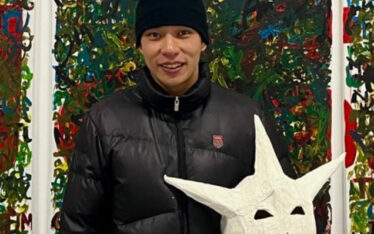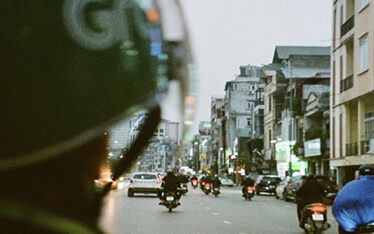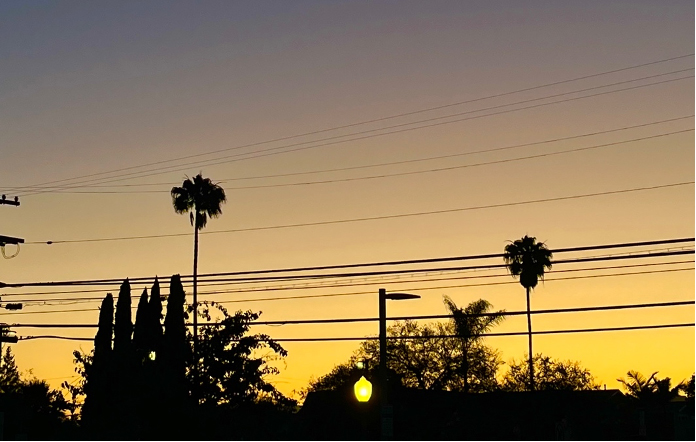
Xin chào! I just moved to Hanoi to teach English for the on-coming nine+ months. Update thus far: beyond discovering the wonders of infinite noodle x meat variations, I am equally coming to terms with a terminal diagnosis of “white tongue”: a hopeless handicap that prohibits the prospect of ever being able to properly pronounce Vietnamese tones.
I now dip my toe into the wonders of infinite lost in translations, in everyday struggle as well as paid profession. Beauty and brutality are simultaneously found in the experience of engaging 3–12-year-olds into a linguistic universe that contrasts starkly with that of their native tongue. I lose my sanity amidst moments of discursive dynamite, as little voices yelping “TEACHER, TEACHER, WHAT’S ‘EVERY DAY’” crescendos against my “WHAT’S RULE NUMBER 3: RAISE YOUR HAND”. I take a deep breath. And I empathize. I elevate the beauty bit over the brutal “naughtiness”: I remind myself that over 90 minutes, I provide these little people with words to identify color, shapes, values… tools to paint their perception of their surroundings.
Ever since the sixth grade, a favorite point of conversation between my dad and me has been the magic behind a brilliant teacher. Given my recent life developments, the topic had been especially prevalent in the Levin household in the weeks leading up to my departure. I examined the headliners of my academic life so as to understand how they contributed to my kaleidoscope vision of the world: Mr. Frank and his 6th grade word bank that triggered a love for the English language; Miss Carver and her youthful bleeding heart that curated personal connections for each and every student to Fitzgerald and Capote (yes, Miss Carver, you made cocky teenagers care about Shakespeare!!); Professor Bartu and his abundant office hours, most often spent pitching me to take the path less traveled by –“rushing into a Masters is for those that are SCARED to face the real world!”; Jason Hong and his excerpts on the violence of recounting marginalized memory that I continue to re-read to this day; Naomi Nicolas Kauffman as she introduced me to Said; Pap Ndiaye as he dismantled glorified imperial history to make room for the opposing narrative; Professor Zinoman and his 9am lectures which convinced that Vietnam’s 20th century history is the most fascinating subject matter academia has to offer. These people challenged my thinking. They shaped my messy mind (for better or for worse). They collectively gave me a series of aha-moments that ended up paving my path up until this point (e.g., moving to Hanoi to my mother’s dismay… thanks @ Bartu).
My dad’s aha-moment came from life-changing mentor Dr. Budka, his revered high-school math teacher. The anecdote that I hear on loop (LOOP I tell you) is how the man made my father — now-a-humanities die-hard, hippie-spirited writer – blindly fall for mathematics. Alice in Wonderland was Dr. Budka’s ploy of choice. Yes, the children’s novel. Turns out, Lewis Carroll strategically orchestrated his work of literary fiction as a math-based fantasy, veiling an equally iconic as much implicit satire of Queen Victoria. Thanks to Carroll’s intricate application of symbolic logic, every character/ occurrence/ utterance of the novel’s storyline holds a double-entendre of opposite meaning.
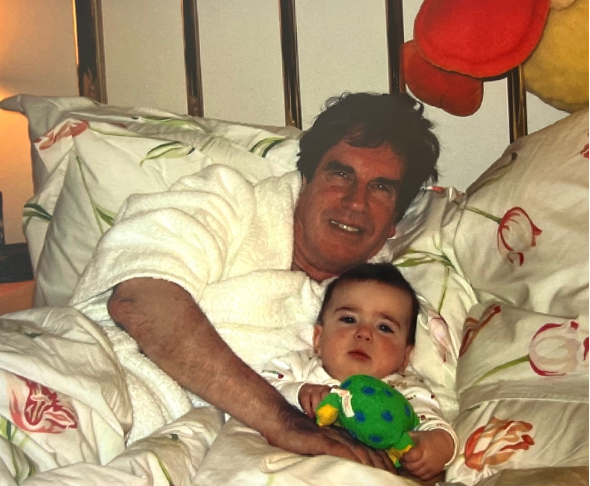
’01, Rob and I posing for camera amidst heated debate on hidden meaning of hookah smoking caterpillar
Now. I could not explain to you any further the algorithmic reading of the Cheshire Cat or Mad Hatter or stoned-out dormouse. After all, I myself left the womb as a fully committed colorful humanities die-hard, diagnosed at birth with a lethal allergy to rigid numbers (I swell up at the throat at the slightest mental cross-contamination and suffocate on my own spit soon thereafter). I never met a Dr. Budka, so a change of heart was never in the cards. Nevertheless, that does not negate my own personal love affair with Lewis Carroll’s marvelous work and the hidden universe of meaning that lies past the gates of the rabbit hole.
My favorite fictional character of all time remains to be (and will forever so) the hookah smoking caterpillar, with the famous mid-puff utterance: “who are you?”. Given the countless shape shifting undergone in the past hour – “one pill makes you larger, one pill makes you small”[1] –, Alice finds herself incapable of answering. Lo and behold, the caterpillar’s inquiry is not intended as a straightforward question! But rather, a post-humanist riddle.
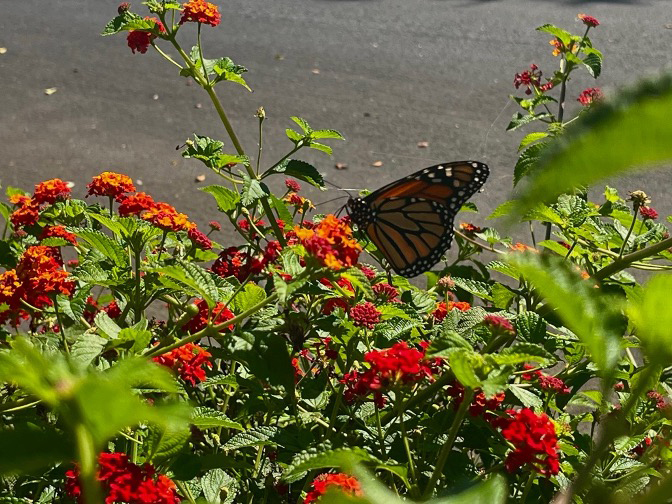
Caterpillar … time has passed since initial exchange…
A summer of… re-reading!
This piece is not about Lewis Carroll. Nor is it about my father’s rapid rise and rapider fall in pursuing an engineering degree. Allow me to shift dimensions back to the real world. My world. In summer 2023. July (“the hottest month ever recorded on earth”[2]).
Let’s recap: the purpose of my summer had been twofold: 1) to prepare for my departure into first time teaching experience — a subject matter abundantly peppered with talk of Budka and Carroll— and 2) to say “ciao for now” to my strikingly un-homey Angelino hometown.
I promise the thought process surrounding both Wonderland and La La Land are not mutually exclusive and fully relevant to this lengthy ramble (bear with me):
From Wonderland to LaLaland
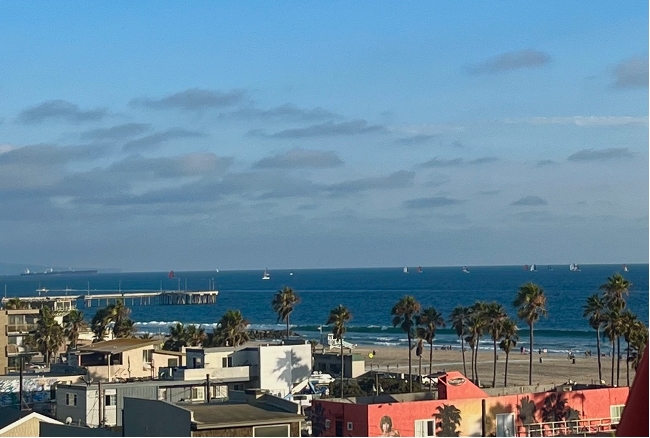
I was born and raised in West Los Angeles. I’ve lived in the so-called City of Angels straight-through until the age of 18. From there, I lived in France for two years, then Berkeley, and now test riding in Hanoi. I’ve evidently never spent as much time in any other place as I have LA. And yet, throughout my 22 years of life, I have incessantly refused to claim this city as something of any valor.
Summer 2023. July (“the hottest month ever recorded on earth”). 2 months here, at home, at Hammer Museum, at Lulu Restaurant. I think I’m finally beginning to gage why I’ve been getting it wrong. Just as Alice is dumbfounded attempting to answer the hookah smoking caterpillar[3], I’ve spent 22 years incapable of answering what this city is, let alone who I am as its by-product. And perhaps that’s the very point:
If Paris is a painting, if Hanoi is a song, if Berkeley is a play, then Los Angeles is a riddle through-and-through. Its essence is both the struggle and the ingenuity required in ascertaining an answer.
This is Los Angeles
LA’s Destination-DNA
Dimension shift.
I like to describe my relationship to LA as many would describe their relationship to family. Los Angeles, I love you, but, most often, I do not like you. To anyone who dares utter a bad word about you in front of me, I will dismantle their jaw single-handedly with a rusty can-opener. But I will equally be the first to say ‘I wish I was adopted’ straight to your face.
I always tell stuck up Europeans who criticize L.A. THAT YOU CANNOT EVALUATE L.A. AS YOU WOULD A EUROPEAN CITY SO DO NOT EVEN THINK OF MUSTERING YOUR COMPLAINT ABOUT THE LACK OF PUBLIC TRANSPORT THIS IS ANTIQUATED UNORIGINAL THOUGHT, WE ARE ALL MORE THAN AWARE AND YOU NOW UNIMPRESS ME. I say this, and yet, my dear Los Angeles, most days I wish the stork dropped me off elsewhere on that morning under April showers. WHY is your entire interconnecting infrastructure a nerve-pinching road-rage-provoking afterthought – “can you not just be a NORMAL major city”?
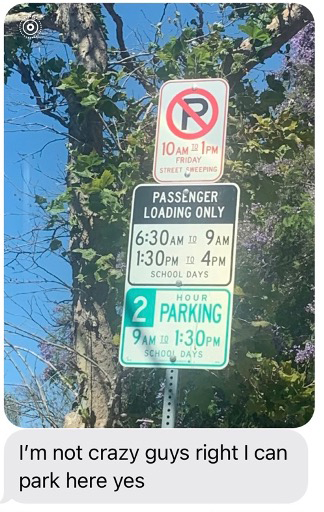
Exhibit A of LA riddles
To make things simple to those who still don’t get it when visiting: in LA, you go somewhere with a vehicle and an intention. NO, you cannot get lost wandering amidst the streets (unless you want to pull over? And Google Maps somewhere to spontaneously stroll? And get a parking ticket as the price of your cinematic naivety?). Venice Beach community, DO NOT speak to me about your walking village vibes — you are an expensive exception to LA’s negative pedestrian equation. The City of Angels is a destination-driven-driving town. No winged divinity is above the holy laws of rush hour traffic.
As much as I relentlessly bash the city’s destination-oriented DNA, I can realize, and perhaps even appreciate, how it has shaped my own relationship with spatial awareness outside Los Angeles (given the lack thereof to most LA natives). When I take the metro/ subway in x city, it’s often the most exciting bit of my day – watching so many FULL BODY HUMANS scurry around, each getting to their respective location. I examine them toe-to-head (to see their SHOES, how wild a thought in Southern California) and ponder on their transport purpose: after-work drinks? date? divorce? drag show?
In Los Angeles, there’s so much sluggish filler amidst the journey to get … anywhere – imagine! 15 million + people and they all they make their appearance outside the census as CARS!! and occasional floating heads. As a result, encountering anything different to bumper-to-bumper boredom is the most crack-head stimulating experience. I now know that it’s the Angelino in me that loses her shit in 99% of cities I visit outside U.S.uburbi.A because my “destination” becomes completely warped with the journey. I feel hyperbolically present at all stages of the day the second I’m out the door. And dizzy? From SO much eye contact! How wild!
Micro Lens in the Megacity
Jas, my marvelous friend, and fellow bitter-sweet LA native recently told me about a conversation she had with one of the creative minds of Annenberg Photography Space. She shared his story of literally “switching his camera lens” when photographing Los Angeles because the surrounding space of wide-angle shots were too hideous. He took on a micro-lens to evaluate the city’s hidden beauty on a zoomed-in scale.
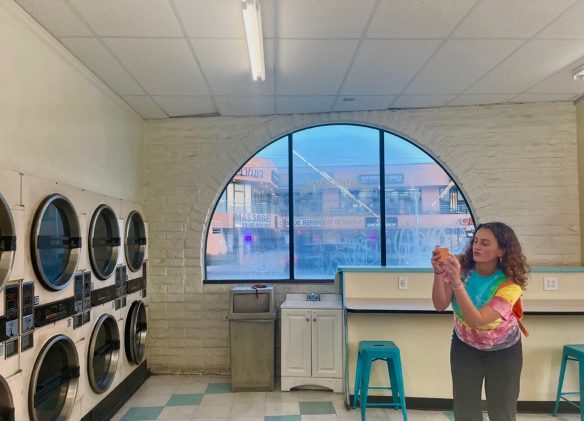
Jas putting the Micro-Lens to practice
As it turns out, with any driving city comes the countless blind spots. They require an effort to be located just as a will to be seen. Talking with Jas brought to my attention the irony that charmingly plagues our hometown: Los Angeles nourishes an alternative approach to perceiving beauty. Yes, perhaps to some this implies a newfound appreciation for Botox. But at least for myself, just as I take it for Annenberg, this shift of perception rather insinuates a newfound desire to pay attention to the minute.
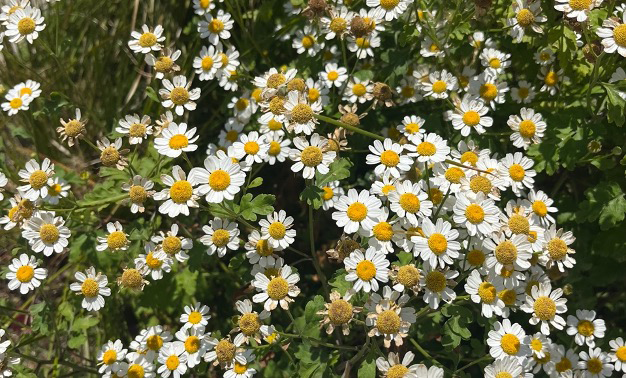
The Hundley Analogy
I recently worked at an event run by the Hammer Museum’s curators for an up-coming exhibition entitled “Made in LA” – a chance for 50+ artists to meet at LA-based artist Elliott Hundley’s Chinatown studio prior to the expo’s grand opening. Aha-moment. Big one. In this re-vamped fabric factory off the beaten Chinatown path, I woke up to the sheer talent of people residing in this city – not to mention the DIVERSITY (50+ artists of every age, ethnicity, skin color, hair color, aesthetic, artistic practice…). “I’m getting it. This is crazy. I’m getting it” on replay in my head as Hundley’s two parrots telepathically nodded in supportive agreement. Near the end of my shift, I meandered around the exquisite studio, exploring Hundley’s works. As obnoxiously LA as this sounds: the experience of engaging with Hundley’s art is the greatest parallel I can draw to the experience of engaging with LA. Please, allow me:
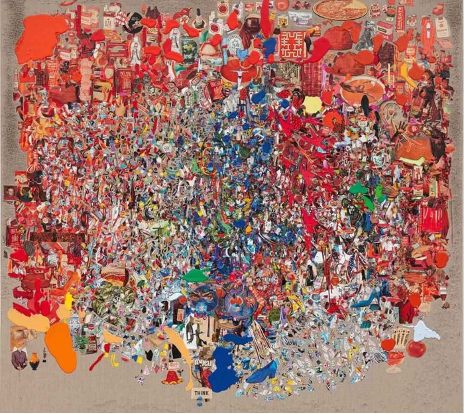
Elliot Hundley, Bishop 2021
LA Times columnist Christina Catherine Martinez wrote of a recent Hundley exhibition as “court[ing] the pure pleasure of looking”[4]. Don’t you just melt(!) at such phrasing? It’s exactly that. I saw Hundley’s massive canvases. From a distance, overwhelming in scale and vibrant frenzied blinding color. // Massive boulevards, 8-lane freeways, beaming sunlight alongside neon billboards. You are intrigued. You take a step in. Upon closer inspection, you begin to discover a meticulously organized universe amidst the colorful chaos. You begin to see hundreds of tiny cut outs, of photos, of ads, of words, sized at a couple centimeters long and wide, pinned with thoughtfully tainted thumbtacks that bring the work three-dimensional texture. I recall myself drooling.
The LA lens. It is great and grand. Intimidating to some, tacky to others. Yet you sense something undeniably warm (// year-round sun). You take a step in.
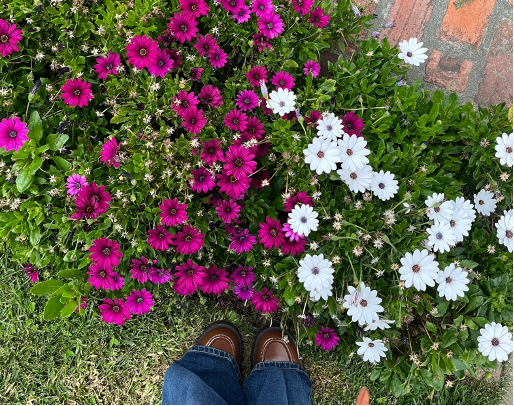
Taking A Step In
Time switch. Pre-Hundley. 4 weeks back?

Happy Hibiscus 😊
I was jogging back to my place three blocks down from the Mormon Church on Santa Monica Boulevard. I stopped by a neighbors’ front garden to shoot an ultra-close-up of happy hibiscus. Then and there (simultaneously!) the thought came screaming into my brain: O’KEEFE! I just pulled an O’Keefe! My brain was taken back to a podcast episode I had listened to in 2020 discussing the story behind her famous floral work. The New-Mexico born artist began painting the ultra-zoomed in shots of colorful flora NOT to evoke petalled-vulva-camouflage. Rather, she wanted to break from the urban intensity and grand sized everything of Manhattan. “Nobody sees a flower, really,” she wrote, “it is so small, we haven’t time, and it takes time. So, I said to myself, I’ll paint what I see, what the flower is to me, but I’ll paint it so big…even busy New Yorkers will take time to see what I see of flowers.”[5] Micro-lens. Zooming in. Within the pseudo-urban context of Los Angeles. Of course, I immediately sent a voice memo to Jas – “I JUST PULLED AN O’KEEFE. I LIVED SURREALISM. NO, NOT SURREALISM… O’KEEFE!”.
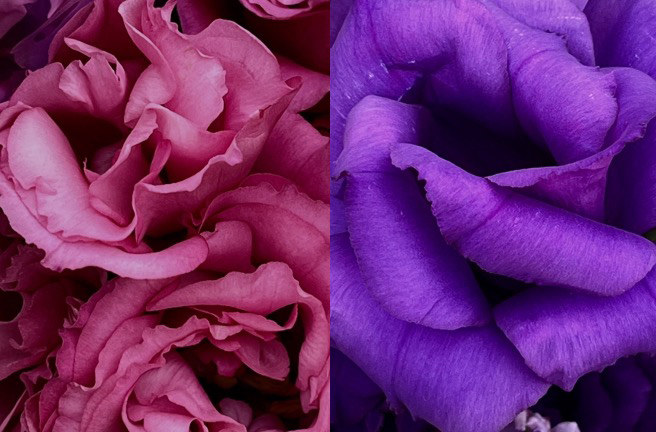
Nature versus Urban: in Dialogue
This brings me to point #2 of Jas’s job searching Annenberg anecdote. The photographer defined the urban planning aesthetic of the city as the following: “Nature is just FIGHTING to break through!”. Urban versus nature! You can typically sense which of the two was transplanted into the other – take Napoléon III’s forestation fetish that brought green spaces to the Parisian mode de vie, or Berlin’s tree love affair that boomed post-reunification as a means of healing “fissures of the German psyche as well as the physical fissures in the urban fabric”[6]. In Los Angeles, it appears a strange mishmash middle ground. Nature and urban are in dialogue rather than unilateral domination. Keep that in mind next time you stroll through.
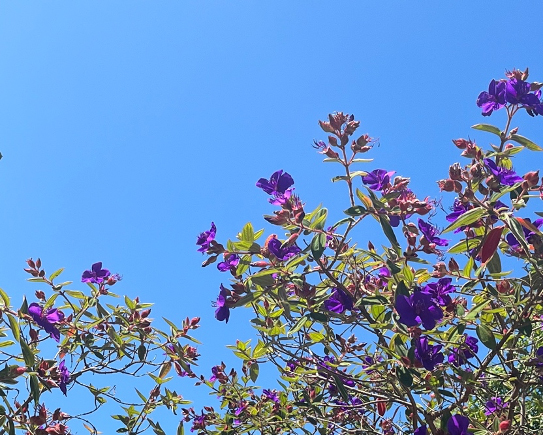
When Jacarandas Bloom
Dimension shift. Lala- turns into wonder-land. I encourage you to envision the yellow mustard flowers protesting for their entitled place in sidewalk patchworks; to listen to the Jacarandas as they converse with the painted asphalt. City of dreams… in the most surrealist sense.
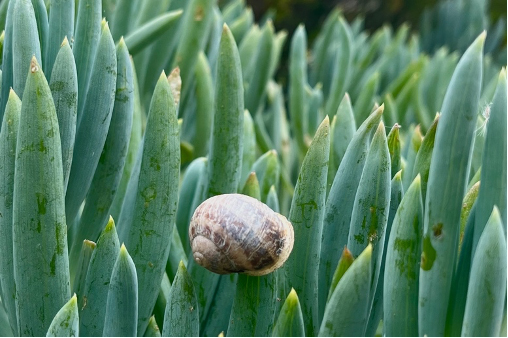
Le jeu, LA game
… Long story short: Jas’s job-searching anecdote turned my perception of Los Angeles on its head – as I hope it might do to yours! Don’t stop your gaze at the bland filler streets. Pay attention to the bougainvillea covering the white wall of the house cornering Overland Avenue and Mississippi. Focus in one flower at a time and I promise that you will cry (yes, cry!) at the site of their beautifully blinding brush strokes of magenta. Every little front yard, every succulent garden, the eccentric trees that line the streets, … a million mini ecosystems that kiss a couple minutes of your day on the cheek. Rendering them warm. Tender!
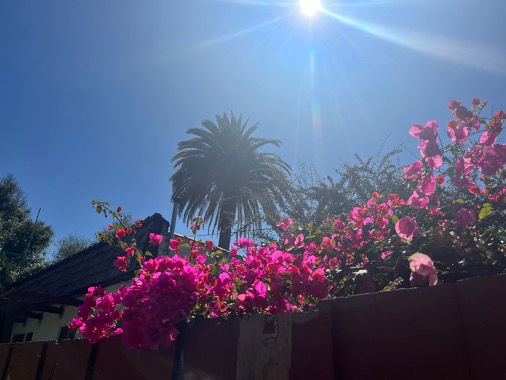
Tear-Jerking Bougainvilleas
Los Angeles is beautiful to those who have the patience to see it as such. To those who take the time to look over their shoulder, on-towards the blind spots! To those who pay attention to the insides of a vibrant flower – expanding on Annenberg, you are to develop the O’Keefean lens! You will find that the urban suburb is checkered with pockets of utmost color, care, and soul. The quest to find them becomes an exhilarating game once you know how to play.
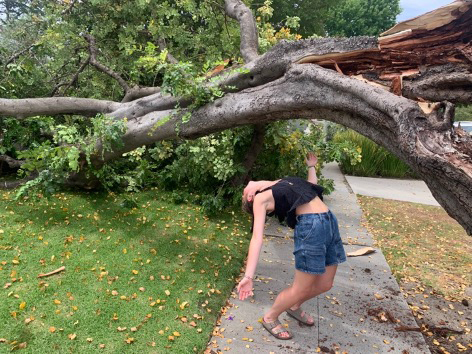
Dialoguing
An Answer to the Riddle: Lulu
This piece ironically affirms that the city infamous for its plastic-fantastic aesthetic and fake-it-till-you-make it philosophy cannot be taken at surface level. You dig, you shape shift, you grow large and small… and you start to make sense of it all. I fell down my rabbit hole this summer at my time working for Lulu, a restaurant founded by Alice Waters – mother of California cuisine and the “farm-to-table” cultural culinary movement against mass food production à la capitalist Américaine – and David Tanis, located in a shaded corner of the Hammer Museum, my all-time favorite contemporary arts museum showcasing the best of LA-based visual arts talent.
By crumbing tables, filling waters, wiping floors, sanitizing silverware, and breaking the fine-dining busser sweat, Lulu unveiled to me the meaning behind the Angelino antonomasia “city of dreams” and introduced me to the magical characters of this town, beyond the talking bougainvillea.
To grow up in a city where people are not from this city… if that’s not its own mind-blowing idiom?!
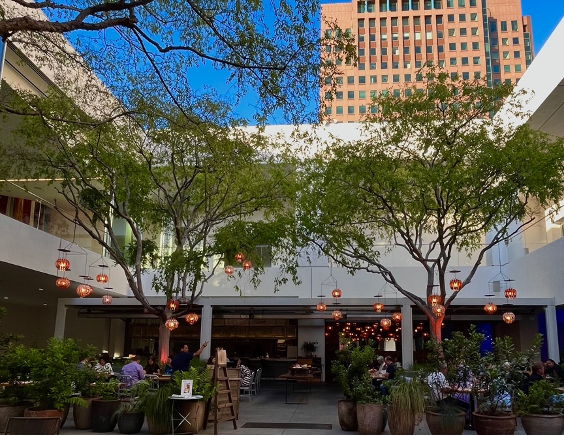
Beautiful summertime Lulu patio
At Lulu, I discovered that the cliché of Los Angeles being a magnet for creative talent… was extraordinarily true. With each co-worker’s story I got to know, I realized those surrounding me in the service industry trekked over from all corners of the state/ country/ globe – the Bay, Texas, Minnesota, Iowa, Chicago, North Carolina, South Africa, Brazil, the Philippines…. All congregated in Los Angeles to pursue their shot. I gradually discovered that my work environment was fully encircled by passion — by intricate mural painters, textile designers (who designed our very uniform!!), musicians, rappers, actresses, film makers, culinary geniuses… This is the Los Angeles that everyone imagines, one that I had brushed over for two decades. This is one current of movement that defines this town’s marvelous mindset, run by an engine of infectious love for one’s craft.
Beyond the creative industry comes an alternate current in the service sector. You can witness it moving across international borders… or simply on the 405 and parallel side streets at 5’oclock peak traffic, as the trucks, vans, and inner-city buses commute back inland. The gardeners, streets vendors, bussers, dish cleaners, janitors, house cleaners, dogwalkers, etc. Immigrants represent over 33% of the total LA county population (this is just considering county, not the greater outskirts). Those with undocumented status represent 7-8% of that total[7]. Kick out that percentage and watch every industry, business, and household lose ability to function. They take on the jobs nobody else wants and incarnate the backbone of Los Angeles’s breathing body. Perhaps this is what people mean when they say California is its own world away from the rest of the country. You work in the service industry where a bare minimum level of Spanish is required to communicate with those helping run the show. You then listen to televised political debate on the buzzword topics of migrations, aliens, walls, and deportation… You look back at the hands that have been relentlessly working dawn till dusk, keeping us all afloat. You laugh. Because you know damn well that any policy along the lines of “they need us, we don’t need them” is comically psychotic.
I look back on the conversations had with my Uber drivers taking me home at midnight from my closing shift – folk coming from Armenia, Poland, Venezuela, Lithuania, Philippines, Iran… the never-ending movement that defines this city, creating a crossroads of energy between passion, drive and dreams. The reality often does not match the latter. An awareness of such is part of the bigger picture.
…
I think of the pamphlet of characters that I crossed in my everyday May-August. I imagine the blue Caterpillar at the entry gates of the city, asking to each as they entered — yet again! –, “who are you?”. What a FASCINATING place to ask such a question … The Angelino tries to respond. They stutter, they hesitate because it is no longer a given, … they struggle and smile as they realize that, here, in this extraordinarily strange city, they get a chance at exercising some agency over how they answer. At writing out their own identity, or at least reclaiming it, reconfiguring it. Movement!
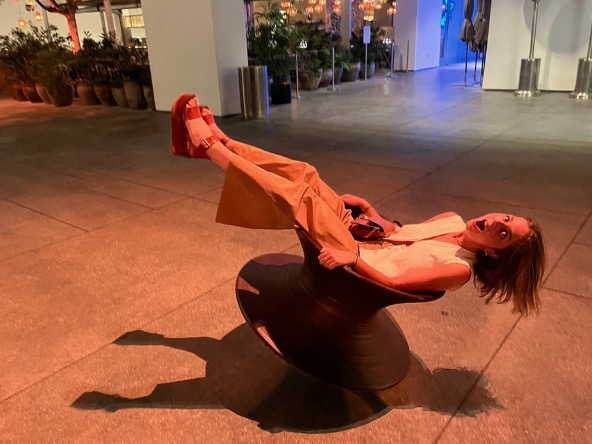
“Movement!” Found even in sedentary seating at the Hammer (ft Lulu in background)
Bottom-Up: The Counter Current of Analysis
Growing up in the States, you come to terms with the fact that the greater system is obscenely upsetting. Maybe it is safest that I speak for myself: when I see constitutional overrides undoing progressive milestone after progressive milestone, I know now to not endow any hope in the institutions running the grand scheme of things. Los Angeles is its own extreme of this realization. The lack of overarching infrastructure, the affordable housing crisis accelerating a houseless epidemic, the nonexistence of the mildest social safety net… matter-of-factly, the city is too big to not fail.
Switch the camera. Micro-lens. You start to look at the smaller moving pieces.
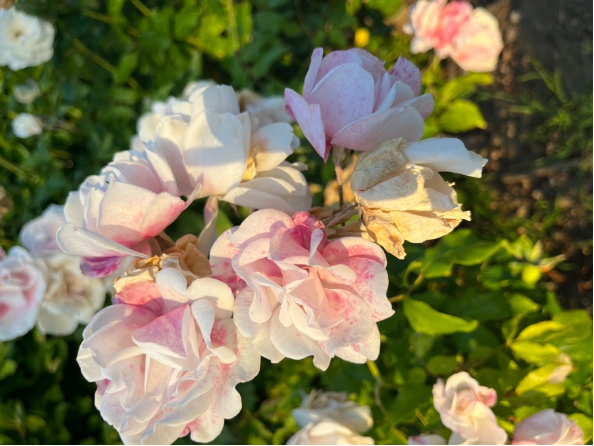
Starting with the city’s urban planning. In his article “Finding Beauty in L.A.’s Visual Clutter”, LA-based curator and architecture journalist Greg Goldin writes of the need to reassess how we appreciate the city’s urban layout – acknowledging its virtue as “a city of architects and not a city of architecture”. He writes:
“Within this permissive chaos, a vernacular architecture has emerged. The design has less to do with the original appearance of the buildings than with how they have since been occupied and bent to new purposes. Cruise the boulevards, and you’ll see a noisy clash of storefronts vying ceaselessly for attention–in a multiplicity of languages, scripts, fonts, colors, and materials. You’ll see entire buildings decorated in florid hand-painted murals or flooded in the fluorescent whiteness of illuminated plastic signs.”[8]
Bottom-up. Just as the free-form landscape has been shaped by individual creators, engineers and developers, the efforts to fill the gaps in faulty public policy can be evaluated in a similar light.
Take Ron Finley as an example — partner farmer to Lulu, founder of the Ron Finley Project, perhaps best known as “Gangsta Gardener”. After being cited for gardening in Compton’s parkways without a permit, Finley began a petition to demand the right to grow food within his own neighborhood. Ron Finley acted upon the collateral damage of fiscalized land use[9] . In turn, he instigated a metamorphosis of barren land – “the South-Central Los Angeles food prison”[10] — into an outlet for colorful community care.
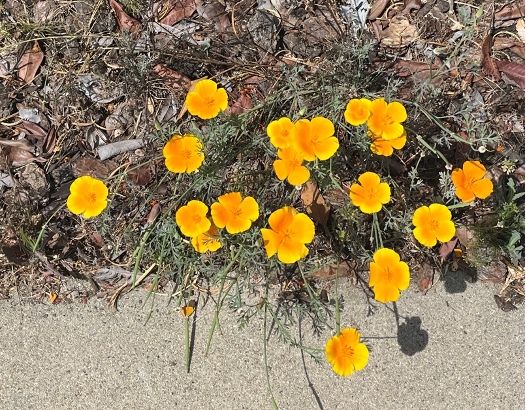
Coloring cracks in the concrete.
// Agnès Varda’s 1981 documentary, Mur Murs, cataloguing the public art of Los Angeles found amidst the painted murals. She showcased a wave of creative thinkers as they re-appropriated the dead walls of their impoverished streets.
Patiently locate such initiatives on the microscale and treat them as an entry point into viewing this alternative modus operandi.
When outsiders pick on the city’s lack of top-down cohesiveness, they miss the magic of the bottom-up hands, hearts, and minds. Perhaps the best analogy is understanding LA as a collaborative collage rather than as the workings of one dominant brushstroke. Everywhere where the system is lacking, there are people innovating– most often because they have skin in the game. Yet another paradox of this peculiar place: infamous for its superficial flavor all the while being sustained by genuine hands-on community initiatives. The philosophy strives to find solutions rather than prose to complain (@ large headed Europeans).
“Who ARE you?”. I am a product of incoherent public architecture and constitutional regression. My eyes examine the world from the ground to the sky. My hope is fed through people not politics. I take an interest in studying revolutions and boredom in learning about laws. I marvel at murals more than museums. Perhaps! I am a plastic-fantastic Angelino to my core.
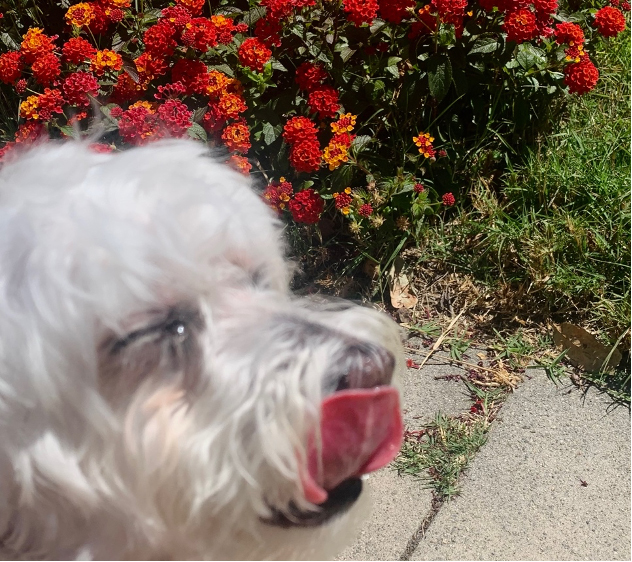
Candid of Angelino contemplating identity
Final Ponders…
My lens on the world was formed by my hometown of eccentric strangers. Movement, micro lens, passionate dreamers, talented architects rather than coherent architecture… a town punctuated by an abundance of question marks rather than affirmative periods. The on-going frustration in finding answers plays a focal role in the Angelino experience. As does living for the moments where you no longer care to find one.
Driving down the Pacific Coast Highway. Running through the ridiculously long beach[11] to arrive at the waterfront. Panting as you chase the brightest pink-orange sunset.
Suddenly, nature and urban are no longer a dialogue. But a ballad! Nature now belts against the constraints of pollution’s written notation. You see the sunset dance along the pacific coastline. You submit. You melt. You stop trying to solve the riddle.
You accept the madness and the magic. You tell this city that you love her. And you apologize for not saying it enough.
Then you look to your left and you see a mini puff of smoke creeping up as your sunset watching companion. You look a little closer – caterpillar! Hookah in hand (proleg? Less poetic). “Who are you?”, aimed at both you and the dreamy city as she begins to shut her eyes to rest.
“Who in the world am I? Ah! That’s the great puzzle!”[12]. You melt. You submit.
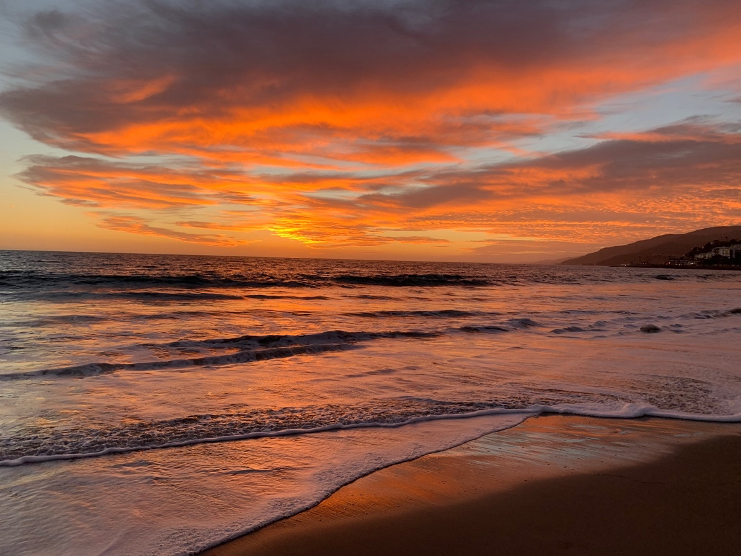
—
Rob — do thank Dr. Budka on my behalf.
Or rather, pass on an equally whole-hearted and horribly white-tongued: “cảm ơn ông!” [13]
_____________________
[1] Chorus citing from Jefferson Airplane’s, White Rabbit.
[2] Thompson, Andrea. “July 2023 Is Hottest Month Ever Recorded on Earth.” Scientific American, Scientific American, 27 July 2023, www.scientificamerican.com/article/july-2023-is-hottest-month-ever-recorded-on-earth/
[3] (how FABULOUS a concept — amidst my family’s move I stumbled upon the rocking chair that was gifted to me/ my parents post-my sprouting into the world, my full name written on the rounded back support with a little blue caterpillar painted on the corner in reference to what would become my favorite bedtime read … full-circle truly at its finest!!)
[4] Martinez, Christina Catherina. “Review: Elliott Hundley’s ‘echo’ Exhibition at Regen Projects Courts the Pure Pleasure of Looking.” Los Angeles Times, Los Angeles Times, 30 Jan. 2023, www.latimes.com/entertainment-arts/story/2023-01-30/elliott-hundley-at-regen-projects-echo-review.
[5] Avishai, Tamar. “Episode 45: O’Keeffe.” The Lonely Palette Podcast, 15 Mar. 2020, www.thelonelypalette.com/episode-45-okeeffe.
[6] Day, Leslie. “Seeing Trees: A History of Street Trees in New York City and Berlin.” The Gotham Center for New York City History, The Gotham Center for New York City History, 9 July 2019, www.gothamcenter.org/blog/seeing-trees-a-history-of-street-trees-in-new-york-city-and-berlin.
[7] “L.A. County Leaders Vow to Continue Supporting Migrant Angelenos Based on State of Immigrants Report.” Los Angeles Times, Los Angeles Times, 7 July 2023us.
[8] Goldin, Greg. “Finding Beauty in L.A.’s Visual Clutter.” Getty Iris, 2 Nov. 2020, blogs.getty.edu/iris/finding-beauty-in-l-a-s-visual-clutter/.
[9] neglected neighborhoods easily defined along the lines of racial segregation)
[10] Ron Finley Project, ronfinley.com
[11] (Fact check but what city IMPORTS SAND?!)
[12] Carroll, Lewis. “Chapter 2: The Pool of Tears.” Alice in Wonderland, W.W. Norton & Company, New York, 1992, pp. 15–16.
[13] “Thank you” in Vietnamese.
(c) 2023 Caroline Levin. All rights reserved.
About the Article
A reflection on the riddle of cultural diversity of Los Angeles.

